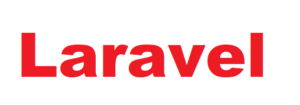
What is Laravel ?
Laravel is a free, open-source PHP web application framework designed for the development of web applications following the Model-View-Controller (MVC) architectural pattern.
It was created by Taylor Otwell and was first released in 2011.
Laravel is known for its elegant syntax, making it a popular choice among web developers. It provides a number of tools and features for common web development tasks, such as routing, authentication, and database migrations, so that developers can focus on writing the unique parts of their applications.
In addition to its built-in features, Laravel also has a large and active community of developers who have created and contributed a variety of additional tools and packages, known as “bundles”, to extend the functionality of the framework.
Whether you’re a beginner or an experienced web developer, Laravel offers a solid foundation for building high-quality, scalable web applications.
Table of Contents
What we learn in Laravel ?
In a Laravel tutorial, you can learn the following:
PHP
Laravel is based on PHP, so you’ll learn the basics of PHP programming and how to use it to build web applications.
MVC architecture
Laravel follows the Model-View-Controller (MVC) architecture pattern, and you’ll learn how to use this pattern to organize your code and make it more maintainable.
Routing
You’ll learn how to define and manage URL routes in your application, and how to map URLs to controllers and views.
Controllers
You’ll learn how to create and use controllers to handle incoming requests and interact with models.
Models
You’ll learn how to define and use models to interact with the database and retrieve data.
Views
You’ll learn how to create and use views to display data and present the user interface.
Templates
You’ll learn how to use templates and layouts to define a consistent look and feel for your application.
Database
You’ll learn how to interact with databases using Eloquent, Laravel’s built-in ORM, and how to perform common database operations such as creating, reading, updating, and deleting records.
Authentication
You’ll learn how to implement user authentication and authorization in your application, and how to manage user sessions and protect against common security threats.
Testing
You’ll learn how to write and run tests to ensure that your application is functioning as expected, and how to use Laravel’s built-in testing tools to simplify the testing process.
Overall, a Laravel tutorial can provide you with the skills and knowledge you need to build professional-quality web applications using Laravel.